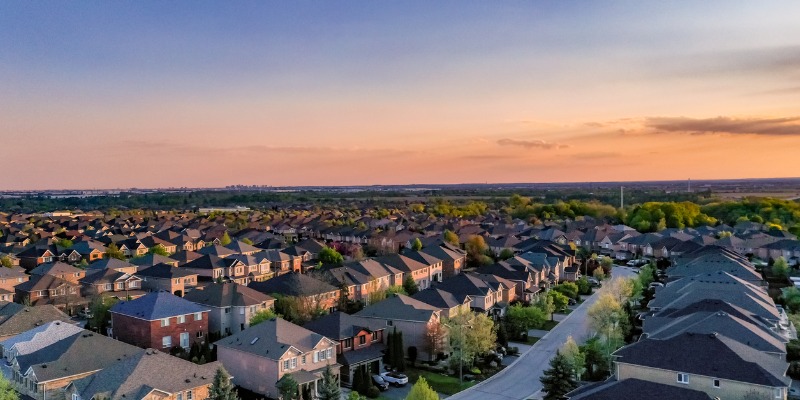Canadian cities are getting denser—but mostly in handful of neighbourhoods

Canada’s population is growing faster than any other G7 country, reaching record growth of more than one million people last year. Faced with this kind of pressure, cities have two options to make more room for people—they can grow outward, by adding new neighbourhoods on the urban fringe, or become more dense by adding new housing units within existing neighbourhoods.
Many cities choose a combination of the two approaches, but for some cities, a mix of geography and policy limit outward urban expansion. Indeed, a new study published by the Fraser Institute shows that between the two most recent census years (2016 and 2021), more than half (54.2 per cent) of Canada’s housing stock growth occurred in existing neighbourhoods.
In other words, Canadian cities are getting denser.
However, this new density is far from evenly spread. According to the study, half (50.9 per cent) of all densification occurred in the fastest-growing five per cent of urban census tracts (neighbourhood-sized units used by Statistics Canada), which added 240,581 homes between 2016 and 2021.
And many of the remaining city neighbourhoods are stagnating or even losing homes. In fact, half of all urban census tracts in Canada added 15 or fewer housing units each between 2016 and 2021, and more than one-quarter actually lost more housing units than they added—for a cumulative net loss of 33,723 housing units.
This highly uneven pattern of urban growth holds across all major metropolitan areas. For example, more than half of all homes added in existing neighbourhoods in the Calgary, Edmonton, Winnipeg, Toronto, Hamilton and Montreal metropolitan areas occurred in the fastest-growing five per cent of census tracts. Further, rapidly falling rental vacancy rates in communities Canada-wide suggest strong demand for homes in all parts of the country.
So why should you care?
Because this highly uneven pattern of housing growth means that developers are mainly building in only a handful of urban areas. This means fewer new homes than if building was more widespread. Fewer homes means less supply and higher prices. Indeed, a severe imbalance between supply and demand is the main cause of the affordability crisis plaguing many Canadian cities.
However, there’s reason for hope. The uneven pattern of housing growth also means there’s tremendous opportunity to open up more neighbourhoods to homebuilding, helping enable the millions of additional homes required to adequately house a growing Canada.
Indeed, several Canadian cities are implementing policies to make it easier to add housing units in more neighbourhoods. Edmonton is overhauling its zoning bylaws to allow more housing options including duplexes, secondary suites and small apartments in current low-density residential areas. Toronto City Council recently adopted a plan to allow up to four units per lot citywide without the need to rezone. Current or upcoming provincial policies in British Columbia and Ontario signal similar changes.
Moves like these might eventually enable desirable but slow-growing neighbourhoods to shoulder a greater share of much-needed homebuilding. They’re not silver bullets, however, and their effects will only be felt over the longer term as individual lots are gradually converted into denser housing types.
In short, governments across Canada have a long way to go if they want the housing stock to keep up with growing need. In the meantime, a small handful of urban neighbourhoods will likely continue to shoulder a disproportionate share of homebuilding.
Authors:
Subscribe to the Fraser Institute
Get the latest news from the Fraser Institute on the latest research studies, news and events.


